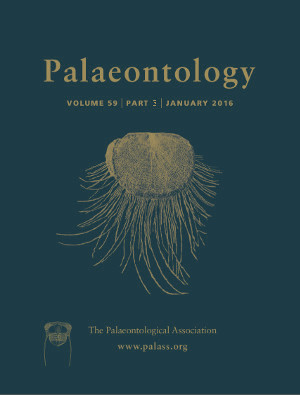Reg. Charity No. 1168330

Spectroscopy information (functional groups and semiquantitative data) by Fourier transform infrared (FTIR) spectroscopy of Spongiophyton Kräusel emend. Chaloner et al. is reported for the first time, in an attempt to identify spectroscopic patterns that would differentiate species of these taxa. A total of 33 specimens identified as S. lenticularis, S. nanum and S. minutissimum and preserved as compressions were analysed. They come from the same fossiliferous horizon of one outcrop situated in the uppermost Middle Devonian São Domingos Formation of the Paraná Basin in southern Brazil. The results reveal that functional groups in the 3000–2800 and 1800–700 cm−1 wavenumber regions are present in all specimens. Infrared‐derived ratios (CH2/CH3, Al/Ox, Ox1/Ox2, C=O cont., C=C cont., Al2 and Ar/Al) and types of kerogen led to a comparison of the morphological characteristics of the studied material and indicate that compressions of S. lenticularis, S. nanum and S. minutissimum contain different organic compounds. S. nanum and S. minutissimum show higher oxidation and lower aromaticity of its organic matter than S. lenticularis. Additionally, S. lenticularis shows low A‐factor values, suggesting a composition similar to type III kerogen, while S. nanum and S. minutissimum showed intermediate to high A‐factor values, suggesting a composition similar to type II kerogen. In conclusion, the chemical‐analytical techniques and statistical analysis (using PCA technique) reveal a closer taxonomic relationship between S. nanum and S. minutissimum than either has with S. lenticularis, supporting their taxonomic separation, previously proposed in the literature on the basis of morphological features. Lastly, the chemical signatures support the hypothesis that links these enigmatic fossils to a type of lichen or other early inland plant.